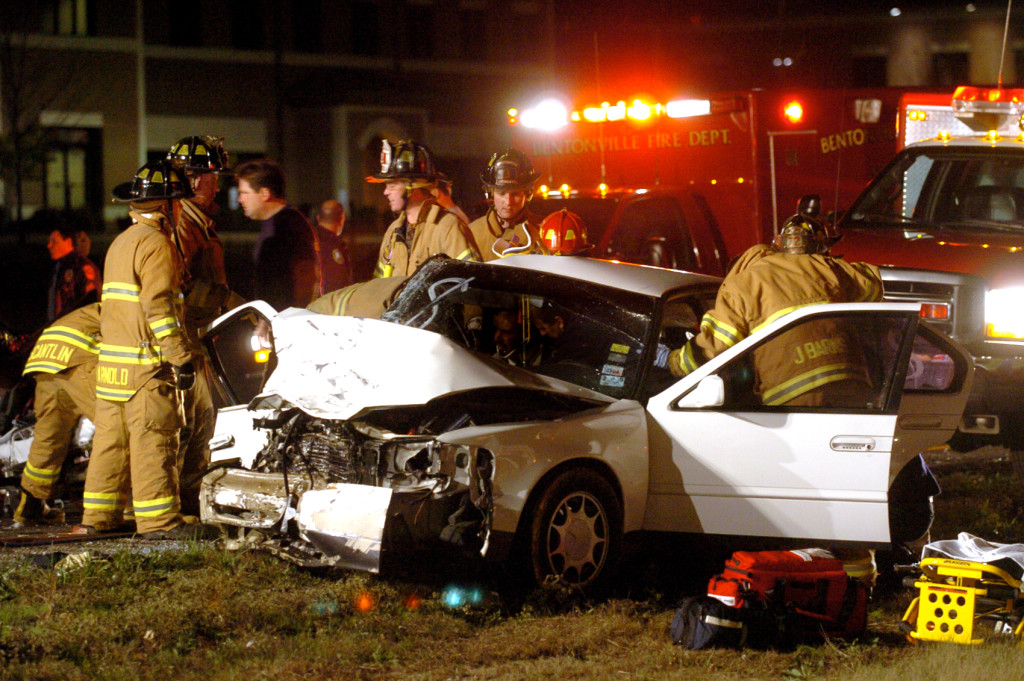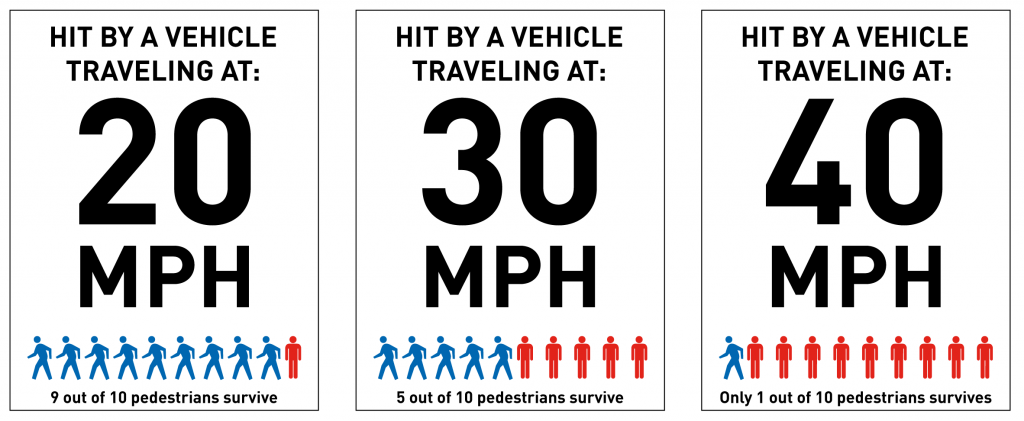Target Zero – Washington’s 2013 Strategic Highway Safety Plan
Washington State in 2000 became the first state in the nation to adopt a policy aimed at eliminating deaths on its roadways, a movement most known as “vision zero”. Since then the state has made remarkable progress, dropping to 4th lowest fatality rate in the country, down from 11th as recently as 2005. By 2012 the rate of traffic fatalities had fallen to a rate of 6.4 deaths per 100,000 people, well ahead of the 11.6 deaths per 100,000 people nationally.
For decades, traffic deaths were considered an unfortunate fact of life that comes with use of automobiles. However, with advances in vehicle design and technology, along with anti-DUI efforts and other traffic enforcement efforts, the United States has seen dramatic reductions in motorist fatalities.
Now, in pursuit of zero deaths, transportation experts in Washington State and around the country are broadening the focus and seeking to re-engineer, not just vehicles, but also the roads that we drive on, so that they are safer for people on foot or bicycle as well as in vehicles. Washington’s Department of Transportation (WSDOT) is using data to zero in on crash-prone areas, and is developing criteria for selecting transportation projects that will give special weight toward those that help eliminate preventable deaths.
The Vision Zero movement has its genesis in Sweden, which adopted it as the nation’s official road policy in 1997. A goal of zero embraces the concept that mistakes on the part of a pedestrian or motorist should not be fatal, and that better roadway design can help compensate for those mistakes. Sweden now has the lowest annual rate of road deaths per capita for a country of its population size, with only three out of every 100,000 people dying in traffic incidents. In the United States that rate is nearly four times higher — 11.6 fatalities out of of every 100,000 people.
Across the United States, however, there are large variations in highway fatality statistics across states and metropolitan areas, especially as some states and cities have chosen to lead the way on ambitious highway safety programs and policies. Following Washington State in 2000, Minnesota adopted a zero fatality goal in 2003. These two states, as aggressive early adopters of zero traffic death strategies, have made statistically significant reductions in vehicle deaths due to their Vision Zero programs and continue to outperform the nation.
Other states have been quick to pick up on these successes, with a majority of states now adopting their own zero traffic death goals in their highway safety programs. In addition, a growing list of cities, including: New York, Chicago, and Seattle are making it official policy of their city governments. States and cities are implementing this road policy through data-driven practices where they are able to see where traffic deaths occur most frequently and how they can be made preventable.
In Washington State, specifically, they are also disaggregating the data on traffic injuries and fatalities by different transportation modes: reviewing traffic fatalities impacting drivers separately from those impacting pedestrians and bicyclists in an effort to make the entire transportation network safe for every person’s chosen travel choice.
Washington’s Target Zero Plan
Washington’s goal of eliminating traffic deaths by 2030, referred to as Target Zero, was initiated by the state’s Traffic Safety Commission. The plan had its origins not from legislation or the governor, but the leadership of the Washington Traffic Safety Commission. Washington State’s Highway Safety Office is a stand-alone agency, and that provided them with a certain level of flexibility to take on these efforts and turn it into their statewide plan. The Director of Traffic Safety Commission came up with this bold vision in 2000, which the WTSC staff got fully behind, and from there it was made into their strategic highway safety plan.
The plan is revised every 3 years, rather than the required 5-year updates by FHWA. The first plan was the smallest, and it has become larger each year with the support of the Governor’s administrations and coordination that grew over time from the State DOT to other agencies, organizations, and local partners. Since adoption in 2000, the State of Washington has released four plans, each with accompanying progress reports with the latest strategic plan from 2013. Target Zero, similar to other successful plans emphasizing zero traffic fatalities, focuses efforts based on four “E’s”: education, enforcement, engineering and emergency medical service.
The Four “E’s” to Target Zero
- Education: Give drivers the information to make the best choices.
- Enforcement: Use driver behavior data to help law-enforcement officers pinpoint locations with a high number of serious collisions.
- Engineering: Use best practices to prevent or reduce the severity of collisions.
- Emergency Medical Services: Provide high-quality and rapid emergency and medical response to injury collisions
The state also sets a series of biennial targets to monitor progress. In 2017 they are seeking to reduce the number of vehicle traffic deaths to 317, and the latest statistics show that Washington State is well on its way to the 2017 target and the ambitious goal of zero traffic deaths by 2030.
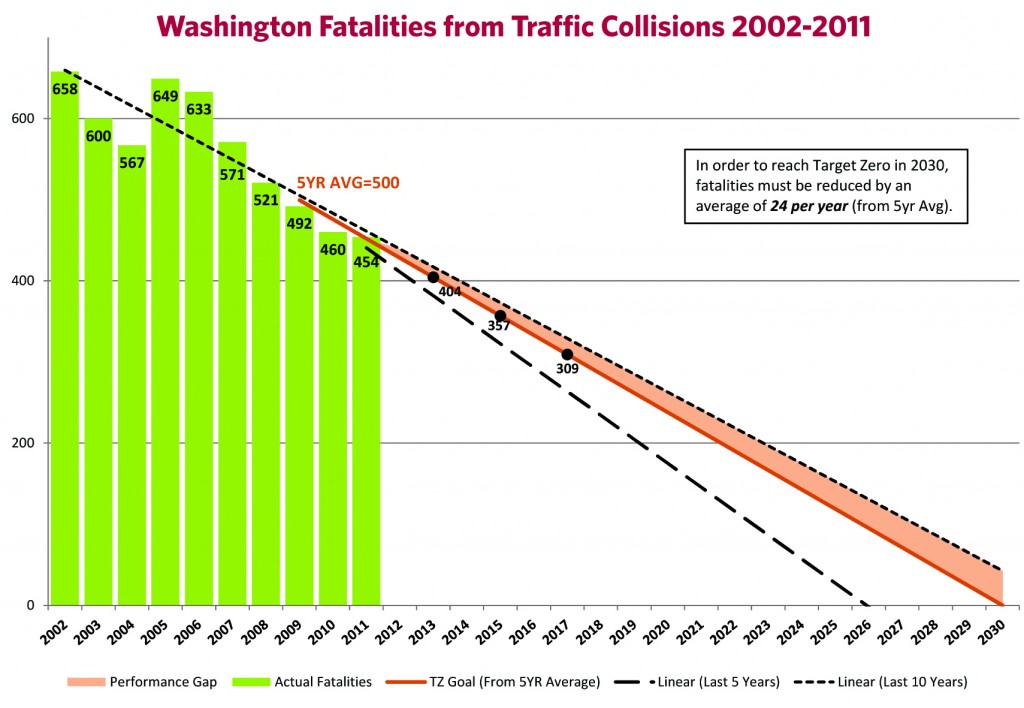
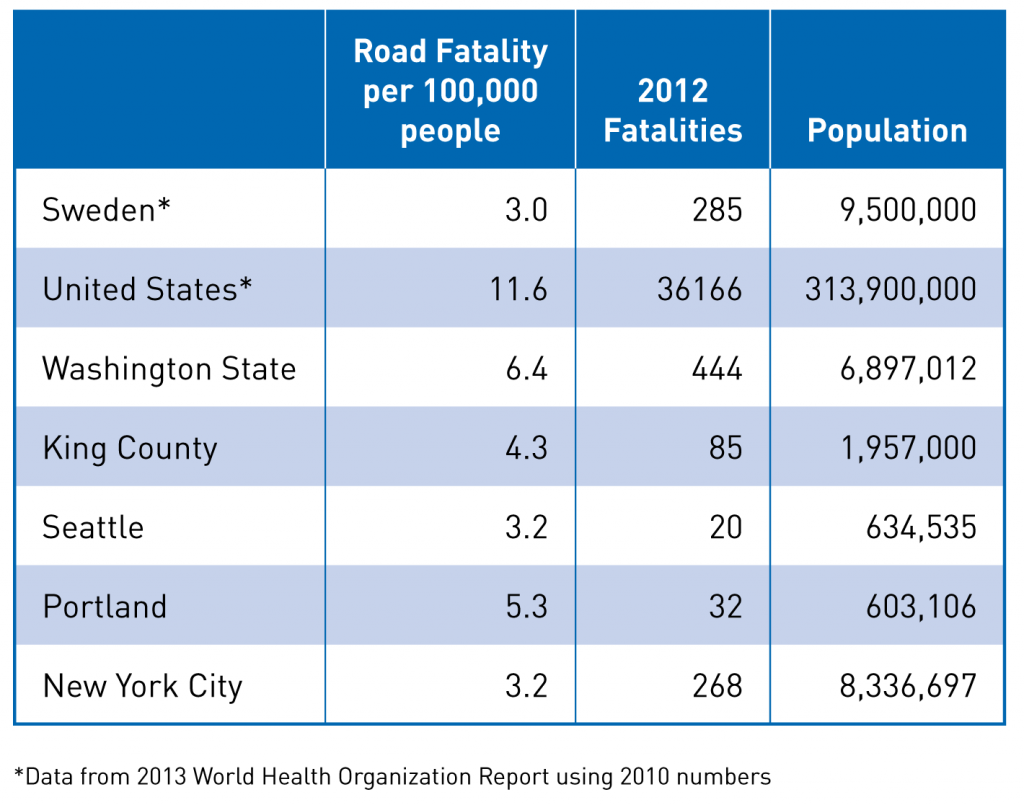
Washington (first graphic) is one of several states that lead the nation in reducing traffic deaths. Locally (second graphic), the City of Seattle already has reduced road fatality rates to almost match Sweden, but substantial work remains to reduce the number of fatalities to zero through their Vision Zero plan.
As part of their strategic framework, Washington Traffic Safety Commission is coordinating with cities, counties, local law enforcement, private and non-profit organizations, tribal nations and organizations, as well as with federal and state agencies. By 2007, with their second updated plan there were around 50 partners, 22 state agencies, 10 local and regional organizations, five federal agencies, two tribal nations, and eight private organizations all collaborating to instill a safety culture and to meet performance targets. Target Zero Managers across Washington each guide a local task force made up of engineers, traffic enforcement, emergency medical service officers, and local organizations that take interests in making roads safer to guide improvements in traffic safety.
The task force coordinates local traffic safety efforts and resources through data tracking, and looking at issues and trends at the local level. The community specific data helps local and regional agencies prioritize local safety projects and programs, and assist them in developing localized Target Zero plans. Funding for behavioral change projects is made through the Washington Traffic Safety Commission, which closely mirrors the national Federal Highway Safety Improvement Program (HSIP), carried out through WSDOT’s Highways and Local Programs Division to support traffic safety engineering improvements.
Seattle’s Vision Zero Plan
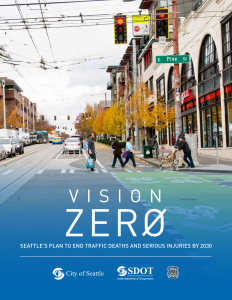 Seattle is leading the way for Washington’s cities in adopting its own Vision Zero plan in 2015. Read their full plan here or click the image at right to view it.
Seattle is leading the way for Washington’s cities in adopting its own Vision Zero plan in 2015. Read their full plan here or click the image at right to view it.
The city’s plan builds off the state’s strategic framework by taking more specific steps towards looking at individual projects that can help achieve their goal locally, and at the same time help towards meeting the state’s goal by 2030. Similar to Washington State, Seattle disaggregated data on traffic fatalities by mode of travel, and looked as well at injuries across different age groups.
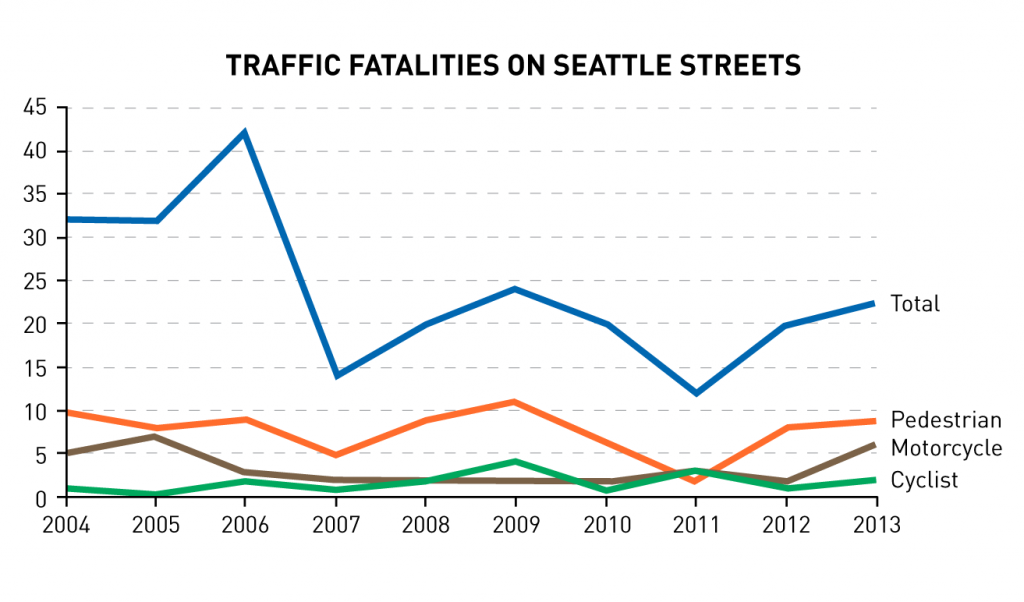
*Nearly 50% of fatalities occur from crashes with pedestrians, bicyclists, and motorcyclists, even though they make up less than 5% of total crashes.
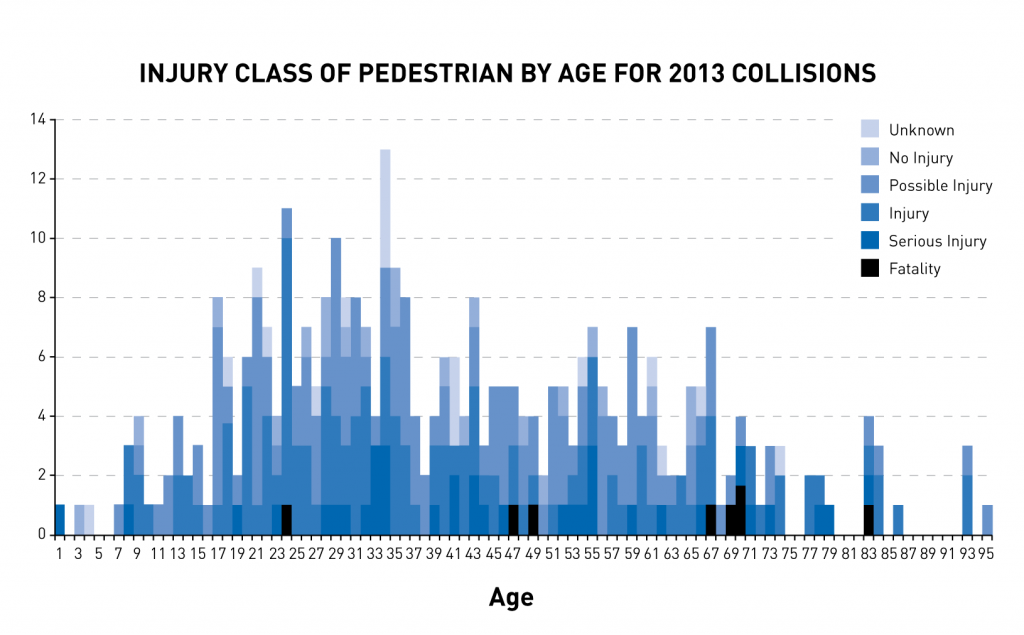
*The young and the old disproportionately face injuries in Seattle
In evaluating traffic deaths there is disproportionate impact on certain racial groups. Washington officials recognized the significantly higher rate of fatalities among Native Americans and is directly engaging with tribal governments and organizations in adopting traffic safety initiatives to lower the 3.9-times greater rate compared to the general population.
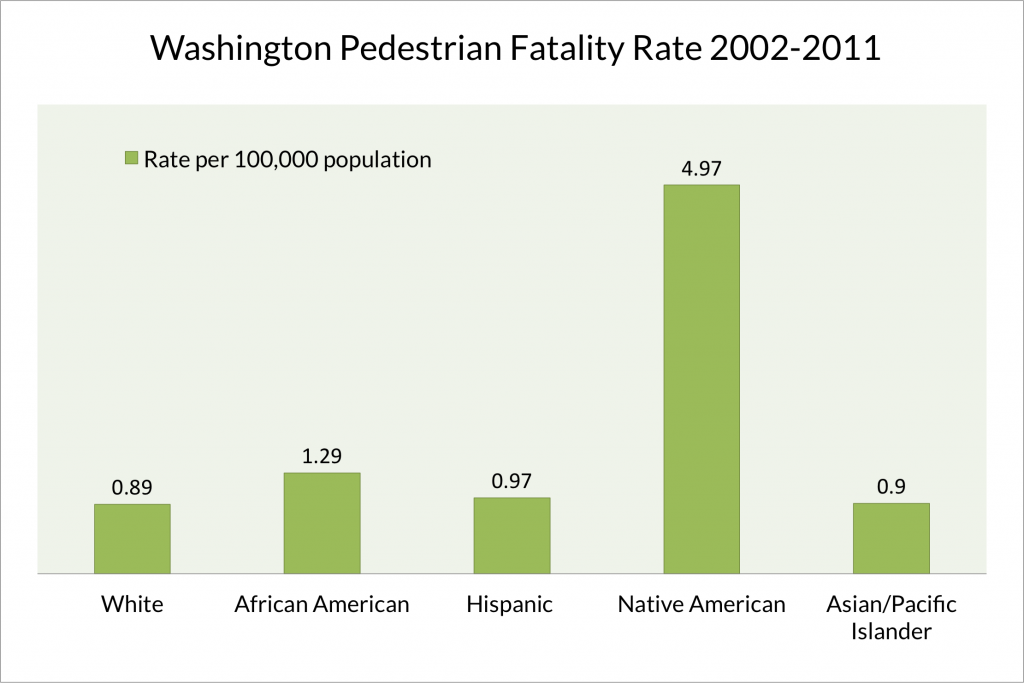
The strategic approach through Target Zero has achieved measurable success, but much of the work still remains unfinished. With its ongoing success Washington State has found that its continued partnership with the governor’s administration, federal, state and local agencies, local organizations, and interested stakeholders remains vital to achieving the goal of zero traffic deaths and fatalities by 2030.
Target Zero in practice: Colville Reservation dropped from an average of 24 traffic deaths a year to just two traffic deaths in 2011 by approaching traffic safety through the four Es strategy used by Washington State: Education, Enforcement, Engineering, and Emergency Medical Service. The following video documents this progress made by the tribe – http://vimeo.com/40528456
Traffic Safety Successes On The Colville Reservation from trafficsafety on Vimeo.





